Two years ago, OpenAI changed the tech landscape with the release of its AI chatbot ChatGPT. Since then, millions of users have used the chatbot's capabilities to speed up work, get answers to their most pressing questions, create better, and boost productivity. And while every other major tech company - Google, Microsoft, Meta, and Apple - have all tried to copy OpenAI's playbook to remain competitive, OpenAI remains head and shoulders above the rest with continual innovation, regular model updates, and new features.
If you're new to this artificial intelligence tool and want to get up to speed about what it is, what it does, and how to get started with it, here's everything you need to know about ChatGPT - the first major AI chatbot.
What is ChatGPT exactly?
Developed by OpenAI, ChatGPT is a generative AI tool that you can chat with and get answers to your queries in a natural conversational dialogue. If you've ever engaged with a customer service chatbot, you'll have some understanding of what to expect. But unlike dumb chatbots that have predefined replies, artificial intelligence bots can spit out answers spontaneously (like a human being) and make them as advanced or simplistic as you want.

Despite its clunky naming, ChatGPT has become a household name. Since its release on November 30, 2022, we've seen the AI chatbot improve exponentially and go beyond text based responses. Over time, OpenAI has given it multimodal capabilities so ChatGPT can work with images, voice, and even videos.
How does ChatGPT work?
The chatbot runs on the Generative Pre-trained Transformer (GPT) - a large language model (LLM) that is also developed by OpenAI. LLMs themselves are neural network models that use machine learning to understand and generate human language.
Don't let the jargon put you off. All you need to know is that when you ask ChatGPT something, it analyzes the context of your question and predicts the words and phrases that are most likely to come next. It basically works like a sophisticated text predictor that uses the patterns it's learned by analyzing its data set to provide its responses. And since the chatbot has been trained on huge sets of data (books, forums, news posts, journals, Wikipedia articles, public webpages, etc.), ChatGPT's has enough learned patterns to make informed predictions and take care of just about every question you throw at it.
The GPT models that power ChatGPT have slowly become better in all aspects, from making better predictions to generating faster responses. Currently, most tasks are handled by the GPT-4o model. But, depending on your use case, you can select from other models as well, such as 'o1' for advanced reasoning, and an o1-mini model for faster responses.
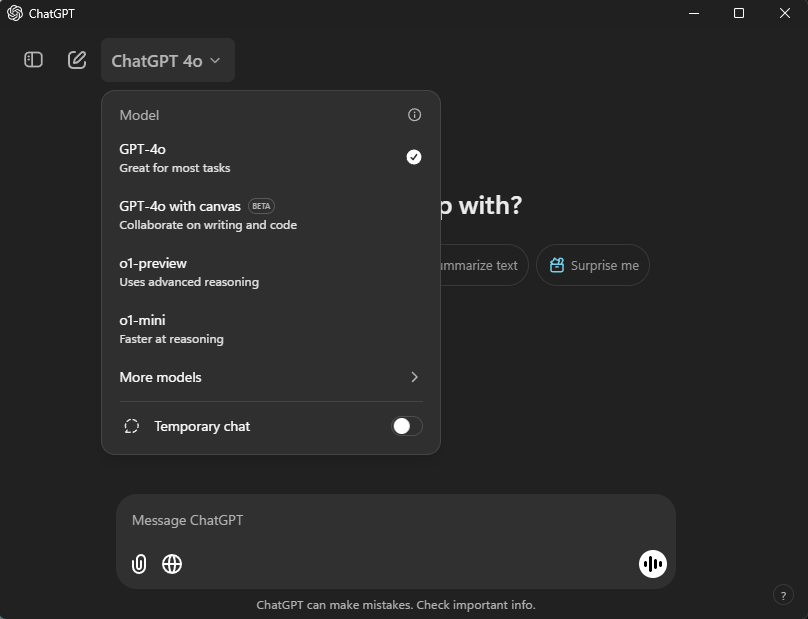
What can you do with ChatGPT?
There's tons that you can do with ChatGPT. For starters, you can ask questions about anything and everything (in over 80 languages). You don't have to worry about asking things precisely. Just chat with it as you would with a friend, albeit a very knowledgeable and intelligent friend.
ChatGPT can also create images from scratch. Simply tell it what you want it to make and it'll create AI images based on your prompt.
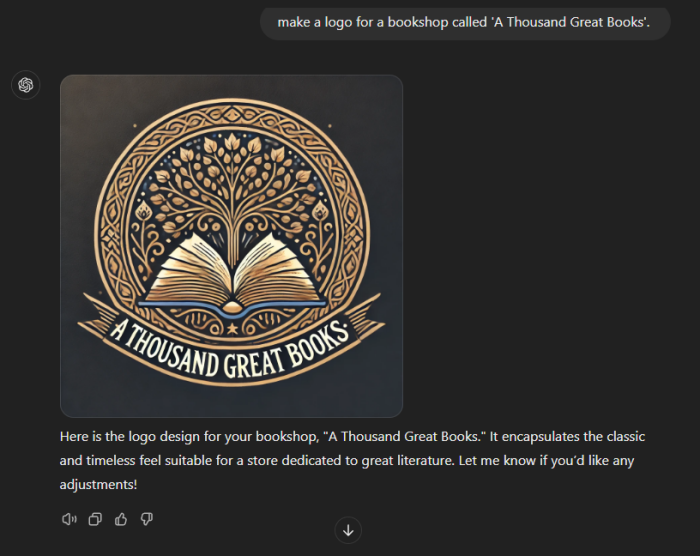
You can also talk to ChatGPT using its voice mode feature. This makes it a worthy alternative to digital assistants of yore. Recently, ChatGPT also released a new Advanced Voice Mode (AVM) that has the most authentic-sounding, human-like voices that we've ever seen on voice assistants. It really is the stuff of movies (perhaps a bit too much). The feature is available on all platforms, including the web.
You can also search the web with ChatGPT now. Compared to traditional search engines, it's a very different way to look things up and get what you're after summarized by AI and delivered to you in seconds.
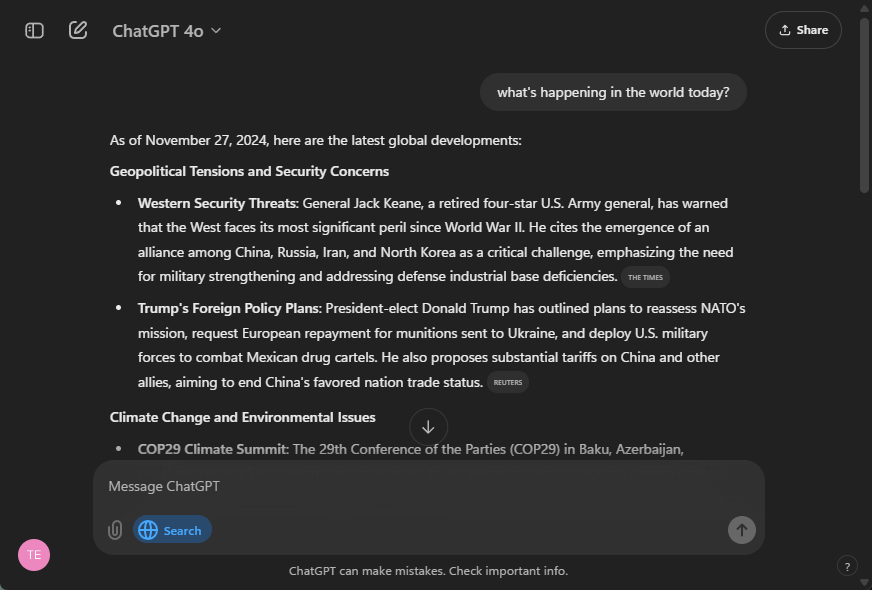
Thanks to its reasoning and problem solving capabilities, ChatGPT also works as the perfect coding companion. Whether you're a newbie looking to get started with coding or a seasoned coder looking for a debugger, ChatGPT can handle it all. Its Canvas feature is ideal for coding purposes, as it is for writing and getting AI to turn your rough drafts into professional pieces.
ChatGPT can also be personalized to serve you best. With Custom instructions, you can customize your interactions with it by giving specific details and guidelines for your chats. On top of that, there's also a Memory feature that allows ChatGPT to understand you better and tailor its responses to you.
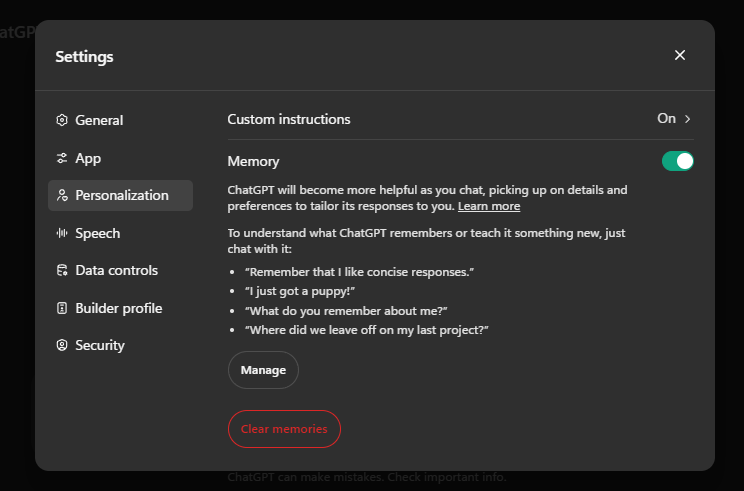
How people use ChatGPT
ChatGPT serves a wide variety of purposes. Depending on what you need help with, ChatGPT could well become your most used tool. Here are a few ways in which users across the globe use ChatGPT in their lives:
- For coding programs, debugging, creating apps.
- Understanding complex topics in simple terms; as a learning tool.
- Writing essays, articles, news, creating resumé, social media posts, etc.
- For summarizing long articles, videos, documents, presentations.
- Solving math problems, getting help with homework.
- Creating custom GPTs, training AI models to achieve specific, complex tasks.
- Analyzing and finding patterns in data.
- Conducting in-depth research.
- Creating AI images, analyzing images.
- Rephrasing existing content and packaging it for another medium.
- Browsing the web; as a search engine.
- As a voice assistant.
- As a virtual friend.
ChatGPT Limitations and Concerns
For all its capabilities, ChatGPT is not perfect. Far from it. From time to time, it's known to give incorrect information or downright hallucinate things into being. Hallucination in AI is the peculiar phenomena where the LLM - and by extension the chatbot - will conjure things out of whole cloth, be it in the content of its responses or the cited sources. This can happen when the LLM doesn't have enough information about the topic, or when its training data set is too narrow, or if the data itself is flawed.
Although things have greatly improved over time, it's important to know that ChatGPT cannot be trusted completely. Nevertheless, this limitation doesn't necessarily overshadow its capabilities. It only means that ChatGPT (like all AI) can make mistakes and that you should always double-check important info and rely on your best judgment when in doubt.
ChatGPT can also be heavily restricted. It won't entertain conversations that engage in illegal activities, exploitation, scams, fraud, discrimination, etc. Do check out OpenAI's Usage Policies to know more. But because of these guardrails, ChatGPT can mistakenly misappropriate even the most benign requests as harmful and censor content. Again, things are much better than when it was first launched. But there's still work to be done.
Last but not least, there are ethical considerations to be mindful of. OpenAI has often had to face lawsuits because the data it's been trained on has been scraped without the explicit consent of their owners. This may not impact the end user but it can be a problem for entities whose data is being 'stolen'.
On top of that, using ChatGPT-generated content is often considered plagiarism. Even though the exact wordings can differ from one response to the next, it remains a contentious issue among legal scholars and you shouldn't pass off material generated by ChatGPT as your own (not without some modifications at least).
ChatGPT subscription benefits
ChatGPT has the following paid plans - Plus, Team, Enterprise and Edu. Starting at $20 per month, these paid plans provide faster response times, full access to ChatGPT's features even at peak times, as well as additional tokens to generate more images, chat longer, and get API access to integrate its AI capabilities into other products and services.
Additionally, ChatGPT subscribers get access to different GPT models as well as early access to new features. Most paid features eventually trickle down to free users. But that is often at the discretion of the company. If you end up incorporating ChatGPT in your work and daily use, a ChatGPT subscription is well worth its cost. Sora - OpenAI's text-to-video model is also available for subscribers without any additional cost.
ChatGPT free use
For most intents and purposes, the free version of ChatGPT is more than enough. You don't even need to login to start using ChatGPT. But if you're going to use it with any regularity, it is recommended to login.
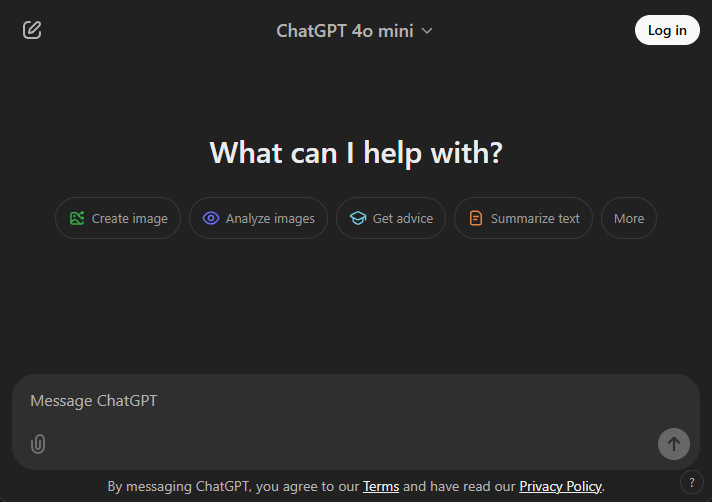
Sure, there are some usage restrictions when you're using ChatGPT for free. You get limited conversations with the default GPT-40 model before it reverts to the legacy model. But that GPT-4 Legacy model is no slouch either, considering that GPT-4 was the top of the line AI model only last year.
UPDATE: Free users now have access to ChatGPT Canvas, ChatGPT Search, and the Advanced Voice Mode - all of which were only available via a subscription.
ChatGPT also has a 'Temporary chat' feature (similar to a Private browser tab) that lets you converse without any history, memory, or model training. No records of your chat are kept when using Temporary chat. If you're worried about your privacy, Temporary chat is the way to go.
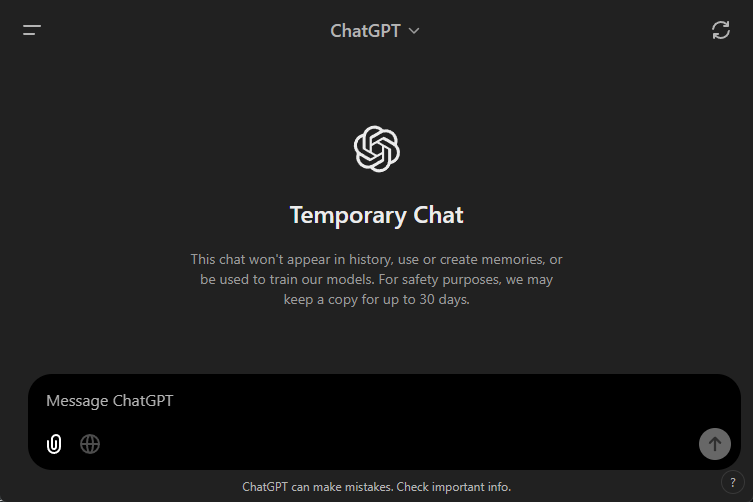
ChatGPT apps for smartphones and desktops
Other than the ChatGPT website, you can also access ChatGPT via its dedicated app for iOS, Android, Windows, and Mac.
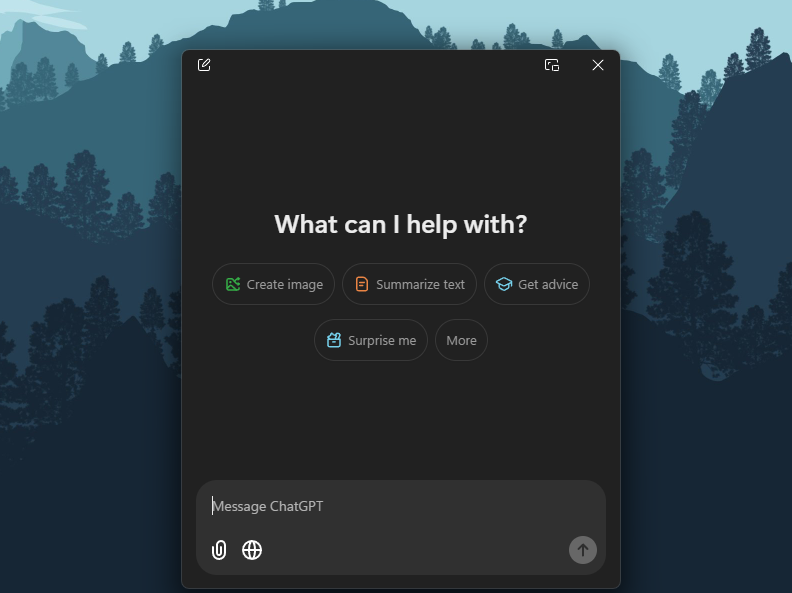
The apps offer all ChatGPT's functionalities, including the ability to upload files and images, browse the web, use Advanced Voice Mode, and all the rest.

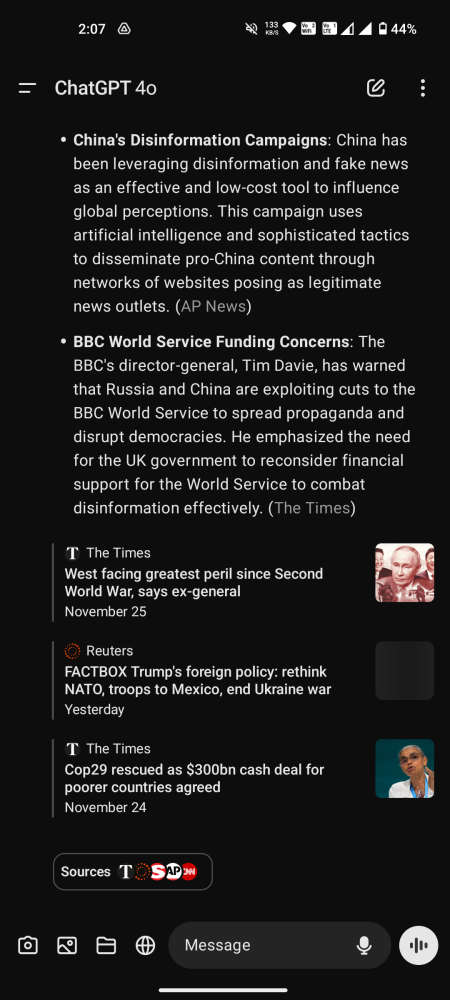
Advanced Voice Mode (left), Web Search (right)
Thanks to OpenAI's deal with Apple, ChatGPT is also tightly integrated into Apple Intelligence and can be used where Apple's own systems fall short.
ChatGPT has also seen deeper integration in several Android OEM skins like Nothing OS so you can get faster access to ChatGPT and send your screenshots straight to the app and ask your questions. Nothing's earbuds also let you access ChatGPT's voice mode quicker, allowing you to use it as your default digital assistant.
ChatGPT's app for desktops offer another, even faster way to use ChatGPT. It too has all the features available on the web, including Canvas (which isn't available on its smartphone app). In fact, recent developments suggest that ChatGPT's desktop app is being primed for several special functions that will let ChatGPT work with apps on your Mac. A similar feature for its Windows app is also in the works.
Whether or not you have a ChatGPT subscription, the AI chatbot provides enough features for you to leverage the best of generative AI technology and do so from just about any device.
Note: Make sure you get OpenAI's ChatGPT only. There are several fake ChatGPT apps on all stores. If you're not careful you could end up downloading these third-party apps that have nothing to do with OpenAI.
Upcoming ChatGPT features
OpenAI isn't done yet. The company has regularly improved ChatGPT's capabilities and continues to develop new features. Reports suggest that after releasing its Search feature, which is in direct competition with traditional search engines like Google and Bing, OpenAI is also looking to release its own web browser (though it may be a while away).
There's also the question of Sora - a text-to-video generative AI model that has been in the works for some time (which has since been released and is everything that we were hoping it would be). GPT-5, which is gearing to be the most advanced AI model till date, is also in the works that is expected to have almost twice the context window and the ability to better handle longer conversations and document analyses.
Some Advanced Voice Mode features, that were showcased in its demo, are yet to arrive. These include the ability to hum and sing, accents, make different sounds, and a live video camera feature that lets the AI voice mode 'see' the world through your device's camera.
UPDATE: The live video camera and a nifty screen sharing tool for AVM has since been released.
Parting thoughts
ChatGPT is a very powerful tool. While it threatens jobs and even entire industries, it also has a lot of potential that can be used for good. From learning new things to developing new tools to getting assistance for all manner of things in your daily life, ChatGPT is a tool for the ages. As the technology advances, it's always better to know what AI can do, use it to improve your life, and safeguard yourself from its perils rather than stay in the dark. Because whether you like it or not, it's safe to say that AI tools like ChatGPT are here to stay.
This article could just as well be written by ChatGPT. It could be more organized, better written, and definitely be done faster. But writers, artists, and creators are urged to ply their craft and take pride in their work, especially in our AI-focused era. AI ultimately feeds off the data that is generated by humans. If everything's ultimately created by AI, not only will it cannibalize itself, the runoff effects will erode the cultures that make such technologies possible in the first place. The future's an interesting place if we can move into it responsibly. Take care!













Discussion